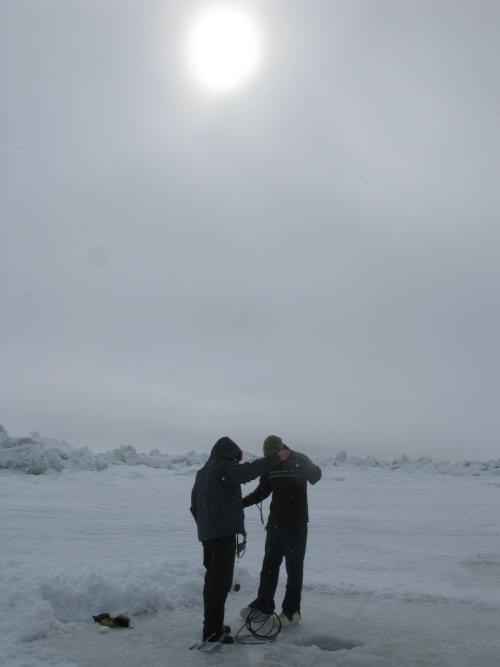
We returned to the ice after lunch today for ice coring. Tara and Steven were set to drill up 5 different cores. Adriane and I went with them and UMIAQ team members Brower and Elroy to give Adriane another chance with her underwater camera, and to give us both a chance for more photos. I asked Steven and Tara to explain the coring project- this was their response: “There is active biology in the sea ice. As sea ice forms, most of the salt from the ocean water gets squeezed out, and the remaining ice is essentially fresh water, but there are very salty channels that remain. It is in these brine channels that an active microbial community thrives. At the ice-water interface, there is a large community of algae, which are active and provide the base of the food web under the winter ice. As the sea ice melts in the spring, they also presumably enter the water column, but it is currently not well understood whether they are still active or just sink out.”
“While sea ice and the biology that it contains have been fairly well studied, the near-shore ice off of Barrow has only begun to be explored. Our project aims to characterize the nutrients and biology present. In order to do this, we have taken ice cores, and sliced off three relevant sectional depths. After slowly thawing in artificial seawater to prevent cell stress, we will perform a number of analyses to characterize the community present and their potential activity. “
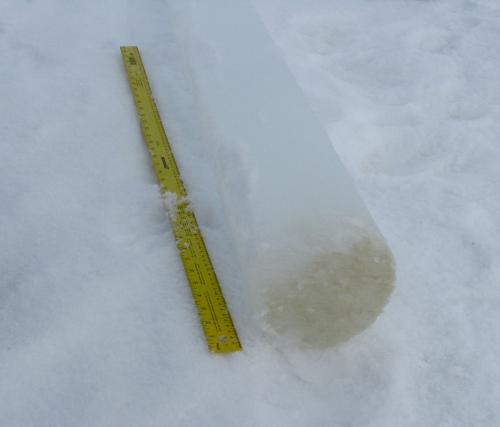
We spent about four hours on the ice as they meticulously worked to drill, slice, and measure the cores. They would take them back to the lab to thaw and analyze. We were working at our first ice campsite minus the tents, so it got rather cold after awhile! It was also along the trail that led to the whale watch site, which caused considerable traffic as they tried to work in a “clean” area of the ice. Several travelers of note included John “Craig” George, Senior Wildlife Biologist (Dept of Wildlife Management- North Slope Borough, Barrow). Craig was on his way to the whale watch perch to join the team of scientists that are counting whales as they migrate up the coast. Leads, openings in the sea ice, allow whales to navigate the coastal waters. The whale camps are positioned alongside the openings, while scientists observe from perches high above the ice at a distance.
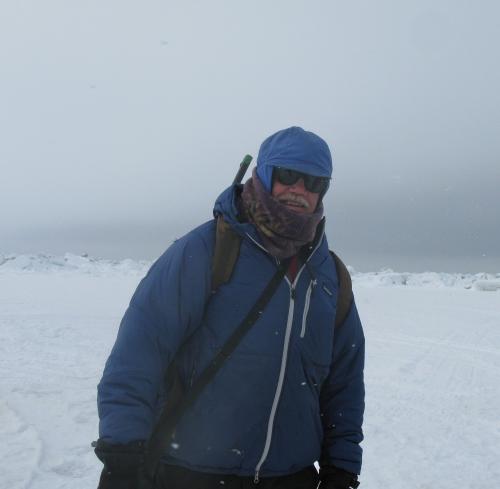
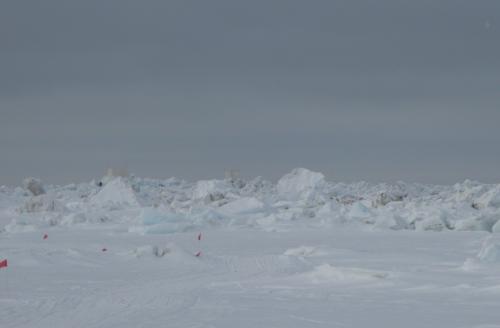
In this sometimes small world, I also met TREC teacher (2005) Leslie Pierce, now Outreach Coordinator for the Dept. of Wildlife Management, North Slope Borough, in Barrow. Leslie shared some interesting websites that can best tell the story of the whale watch with images. I have posted the URLs at the end of this blog. Leslie reports that as of May 3, the latest whale count was 2,102!
Also seen on the ice was Barrow teacher Deb Greene and her husband - out skiing when their trail led them right to our core site! I had been trying to catch up with Deb all week with no success, and then there she was! Deb and I met on my last trip here in January when Tish Yager and I visited her classroom. Sadly, we only visited a few minutes before they left and we went back to work. You’ll be hearing more about Deb and I working together cross -country on a special project next school year inspired by the research work of the ArcticNitro team!
Saturday was the last day of sampling for this season. Tara and Steven made another trip to core on Monday. Several of us left on Sunday night, with the remaining team members staying on until Wednesday to finish lab experiments, pack and ship the samples. The team returns in August to do summer sampling. By then, they’ll be able to travel by boat to the sampling sites. They’ve told me that the environment of Barrow looks very different in the summer. Hope to share some images from that fieldwork with you.
Thanks to all of you who have followed our latest journey. It’s amazing how much learning you can achieve in just a week’s work! Special thanks to Russell Snyder, Brower Frantz and the UMIAQ logistics support team; Faustine Bernadec and Joshua Bacon (CPS-Polar field Services); and PolarTREC for helping to make this visit successful.
The sun won’t set on this journey, at least not for a while! Stay tuned ☺
Cheers, Lollie
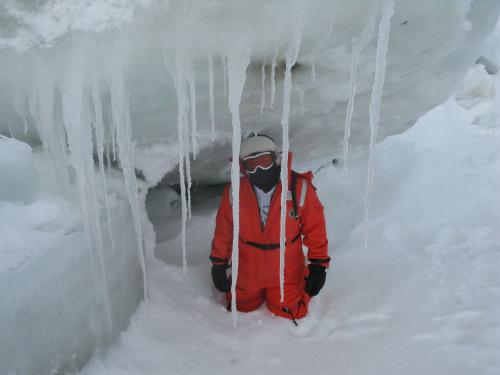
Websites of interest:
Arctic Stories
http://www.purdue.edu/climate/arcticstories/wildlife.html#CGeorge
There is also info on a book about Craig and his work by Peter Lourie, Whaling Season: a year in the life of an arctic whale scientist. http://www.peterlourie.com/books/WhalingSeasonJacket.htm
- < prev
- 10 of 10


Comments